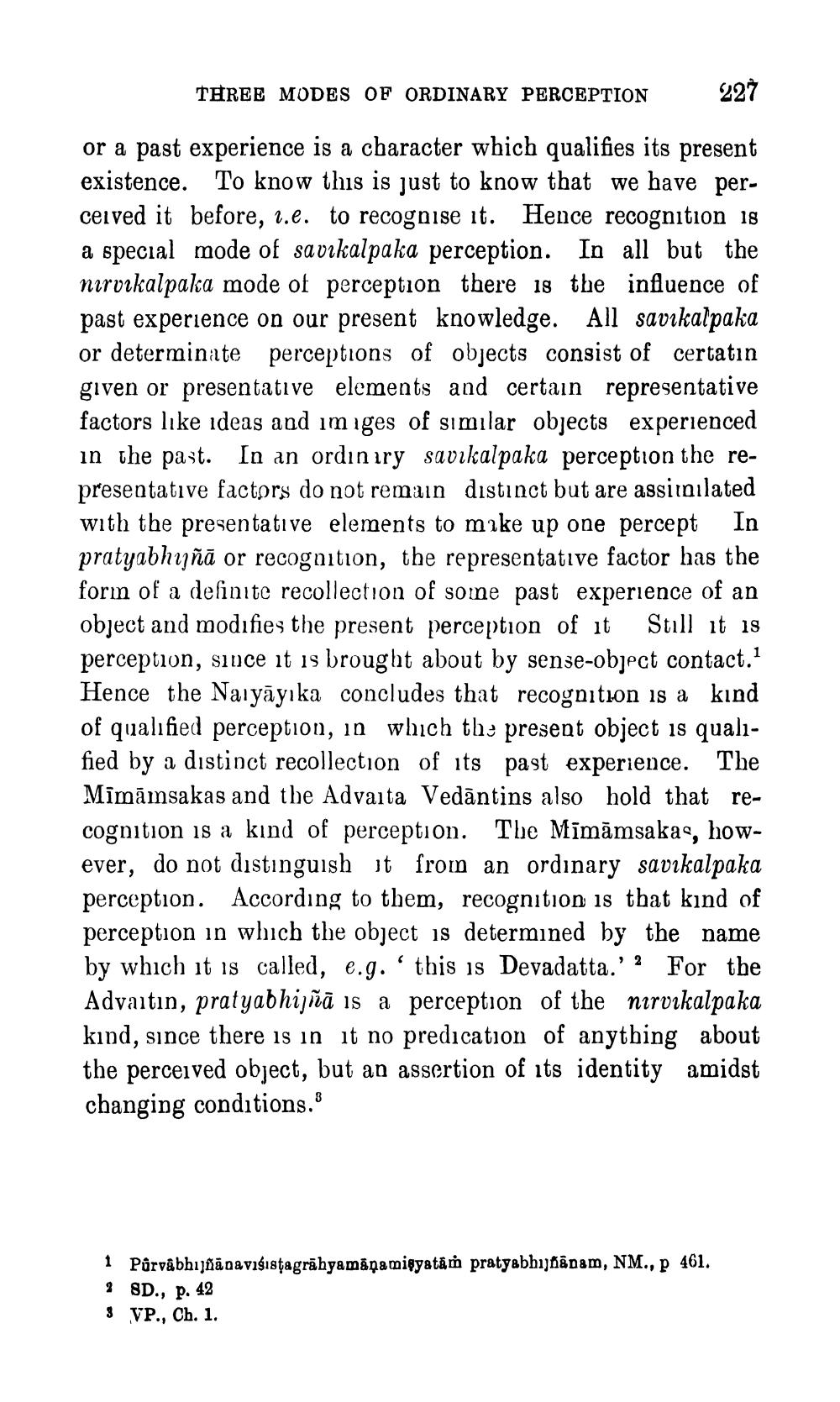________________
THREE MODES OF ORDINARY PERCEPTION
227
or a past experience is a character which qualifies its present existence. To know this is just to know that we have perceived it before, 1.e. to recognise it. Hence recognition 18 a special mode of savikalpaka perception. In all but the nirvikalpaka mode of perception there is the influence of past experience on our present knowledge. All savikalpaka or determinate perceptions of objects consist of certatın given or presentative elements and certain representative factors like ideas and images of similar objects experienced in the past. In an ordiniry savikalpaka perception the representative factors do not remain distinct but are assiinilated with the presentative elements to make up one percept In pratyabhijñā or recognition, the representative factor has the form of a definite recollection of some past experience of an object and modifies the present perception of it Still it is perception, since it is brought about by sense-object contact. Hence the Naiyāyı ka concludes that recognition is a kind of qualified perception, in which the present object is qualified by a distinct recollection of its past experience. The Mimāmsakas and the Advaita Vedāntins also hold that recognition is a kind of perception. The Mīmāmsakas, however, do not distinguish it from an ordinary savikalpaka perception. According to them, recognition is that kind of perception in which the object is determined by the name by which it is called, e.g. 'this is Devadatta.'? For the Advaitin, pratyabhijñā is a perception of the nirvikalpaka kind, since there is in it no predication of anything about the perceived object, but an assertion of its identity amidst changing conditions.
1 Porvåbhijñā navıgıstagrāhyamanamieyatim pratyabhijñādam, NM., P 461. 9 SD., p. 42 3 VP., Ch. 1.




